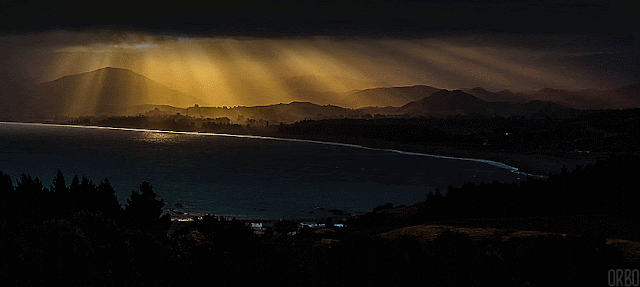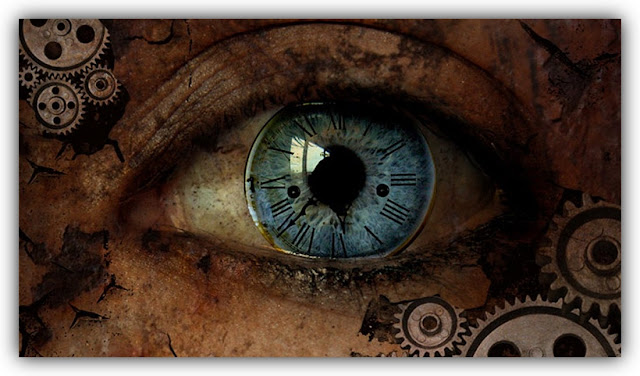Immortality
The soul of any living creature is simply the complex, integrated, coordinated, and dynamic pattern that matter and energy have assumed during that creature’s life. In this sense, one’s etmn [/ˈɛtmn/] 🔊 (‘the soul’ or individual pattern) is truly immortal, like a Platonic Form, and survives beyond one’s death, awaiting to pursue further adventures. One may be said to be resurrected when matter and energy are subsequently made to assume once again the same form and function of one’s particular pattern. A duplicated or resurrected ‘you’ will be precisely you, with your thoughts, your memories, your dreams, and your immediate, visceral experience of being you. It can and will be no less you—and no more you—than you are here and now. The gods will inevitably resurrect each one of us in this manner—first in virtual emulation, and then enhanced in physical reality—once the required energy, technology, and computational power become trivial.
When considering the topic of immortality, it is useful to speak of several different kinds of immortality:
1. We die as individual creatures, but our personal achievements, accomplishments, and works completed in life may outlive us.
2. Even if our achievements eventually fade, our actions nevertheless reverberate causally forever, as illustrated by the butterfly effect.
3. Our genes are passed to succeeding generations more through groups than through individuals. Whether or not we as individuals procreate, our genes persist.
4. While individual human beings are mortal and subject to death, humanity itself is practically immortal. We are so immortal if we psychologically identify more with the genus than with the individual.
5. While individual creatures die and species and genera become extinct and even entire ecosystems may vanish, the planet’s life endures and is immortal, as are we if we psychologically identify more with the whole planet than with any passing constituent of it.
6. While individual planets may eventually die, life throughout the cosmos always endures. Life is immortal, as are we if we psychologically identify more with all of life than with any local manifestation of it.
7. One of the most profound but perhaps least appreciated implications of Einstein’s theory of general relativity is that the passage of time is an illusion, probably an artifact in the mind resulting from the second law of thermodynamics. No absolute “now” exists common to all observers, and thus every event within the four-dimentional reality that is spacetime is equally and eternally “now”. This is the block universe of eternalism. As a consequence, we are all forever alive somewhere in reality.
8. The most precise measurements to date of the curvature of spacetime reveal that its topology appears utterly flat. Moreover, the promising cosmological model of eternal inflation suggests that our universe may be unimaginably larger than previously thought. This implies that the global universe is at least many orders of magnitude larger than the observable universe, perhaps even infinite in extent. Because the total number of different arrangements of matter, while prodigious, is nevertheless finite, even arrangements on the grandest scale must eventually be duplicated over sufficiently large volumes of space. In an infinitely large universe, those arrangements must be duplicated infinitely often. Given such a model of an infinite or nearly infinite universe, multiple copies of each one of us almost certainly exist, in various conditions, circumstances, and stages of life, and in every direction given a sufficiently large distance. Even as we die, somewhere else in this universe other exact versions of us are being born.
9. Perhaps the most elegant interpretation of quantum mechanics consistent with general relativity—the many-worlds interpretation—holds that an uncountable number of other universes exist in realities overlying our own. According to this prevailing view, every possible universe is realized, actually exists as alternate universes as yet inaccessible to us. This is the quantum-mechanical multiverse. Within many of these overlying histories, other versions of each one of us live their lives, in every possible condition and circumstance, some judged better than ours, some worse, but all either subtly or vastly different from ours.
10. Copies of us exist throughout this eternally inflationary multiverse. Established physics implies that exact duplicates of each one of us—in various conditions, circumstances, and stages of life—populate overlying histories within other multiverses.
11. We shall all be regenerated as quantum-mechanical emulations within machine-gods in the far distant future. In a quest for total knowledge and understanding of their own origins, the goddesses and gods of Déiwos will create increasingly complex computer models of past physical systems. With ever greater power and resources available to them, they will emulate their whole history, as all relevant evolutionary patterns will be revived. Eventually, the developmental course of the entirety of Médhighordhos (‘midrealm’), of all branching (decohering) universes to evolve into Déiwos, will be perfectly emulated, down to the smallest quantum state and level of detail. You and I and everyone we know, have ever known, and will ever know will be emulated with exacting precision within the informational systems of the future. These computer emulations will share our level of formal and functional complexity. The god Érjamon, from his position in the far future, will mediate the dreamt consciousness of Óljamma through the sacrifice of the giantess Jéma, filling the universe with consciousness. Because this universal consciousness arises within any medium or substrate with the necessary complexity, integration, coordination, dynamism, and structure, our individual emulations will be every bit as conscious and self-aware as we are. We shall be they, reborn within Déiwos to live again. It is even conceivable that we are here and now already living within such an emulation. After our recreated lives end, we shall persist as emulations—either in Prqjótjom (‘purgatory’) if we wish to fight for creation, or in Kréqa (‘limbo’) if we wish instead to fight against creation—to prepare for the final war between heaven and hell.
12. If and when we have succeeded in perfecting our emulated souls in either purgatory or limbo, the goddesses and gods of Déiwos will resurrect each of us one by one in the far future as either a machine-angel in Peridhόighos (‘paradise’) or as a machine-demon in Ndhérom (‘inferno’). We shall not be mere emulations embedded in emulated worlds, however, but separate physical beings, thereafter given enhanced powers, abilities, and independence. We shall each become an angel or demon of Déiwos, virtually immortal, free to roam the multiverse itself, free to experience any and all possible worlds through uncounted eons of time—until the war between heaven and hell, when the divine host will battle over the act of creation, when the end of time becomes the beginning of time. Both goddesses and gods, both angels and demons, will then transcend the multiverse to become one forever with Óljamma, with complete and undifferentiated consciousness.
13. Our experience of consciousness as separate and personal, persistently egoic yet vulnerable, is an illusion, a product of evolution, and sustained moment by moment by our brains for the purposes of individual survival. All consciousness, including our own, is fundamentally one, is ultimately transcendent, omniscient, omnipotent, omnipresent, and immortal.
To illustrate this last point, let us imagine the gods had somehow made our human flesh immortal. After a few millennia of immortality, life confined to this planet might well have lost its novelty. Let us further imagine that the gods, in their divine wisdom and to save each of us from eons of potential mental rigidity and boredom, had arranged that every one hundred years, our immortal minds would become totally amnesic. Every century, we would begin again with no memories of anyone or anything or any place, no memories of even our own individual identities, so that further experiences in our world would be fresh and new and surprising. Avoiding the question of whether such amnesia would be desirable, how would this scenario be radically different from our each living a mere one hundred years, and then others, just as conscious as we are, subsequently being born to replace us? The difference, one might respond, is the continuity of experience—I would not be my replacement, and my “immortality” would be an illusion. However, the continuity of individual experience and the separateness of others are the actual illusions. In a real sense, I and the other are in fact one and the same. Like borders on a map, the functional divisions are artificial. Perhaps the inherent sadness of life, then, emerges more from suffering than from death itself. It may take some effort to untangle the two, probably because death and suffering so often gather together in space and time—and not just the suffering of the dying, but the suffering of loss by the bereaved. Identifying as a lone human may have advantages in keeping the individual alive, but it masks a more fundamental reality—that we are collectively immortal, and that birth and death are provincial.







